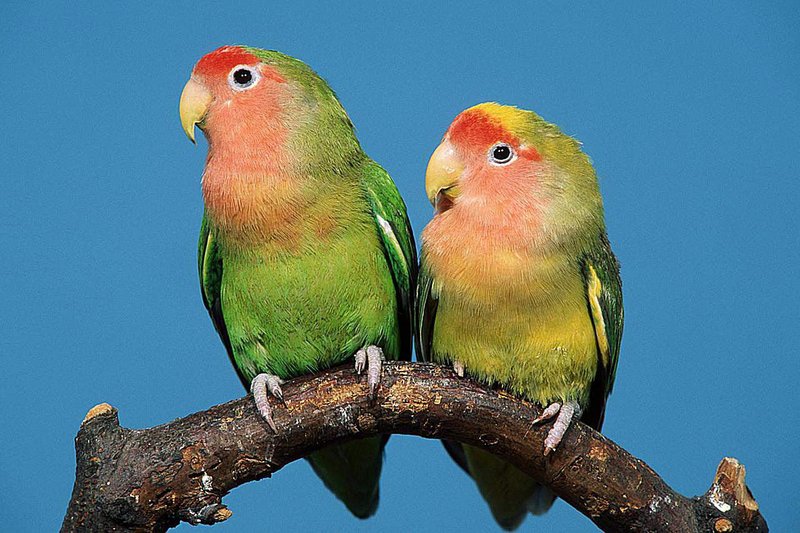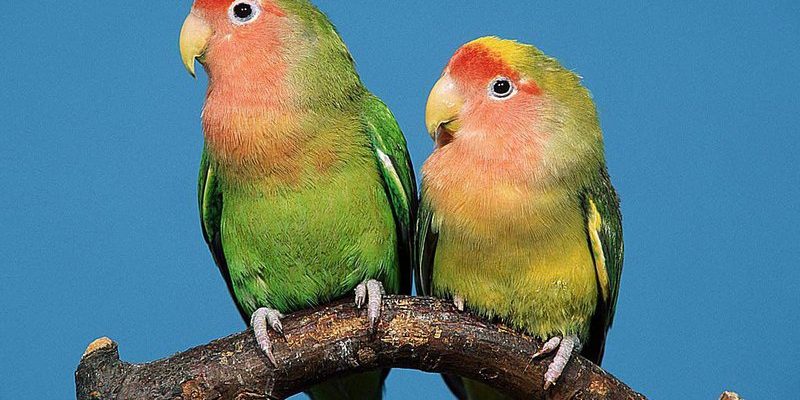
When we discuss lovebirds, we’re typically referring to the *Agapornis* genus, which has several species like the Peach-Faced Lovebird and the Fischer’s Lovebird. These birds are not just cute; they have interesting quirks and facts that many people aren’t aware of. So, grab your drink, settle in, and let’s dive into ten intriguing aspects about lovebirds that you might not know!
1. They are Social Creatures
Lovebirds thrive on social interaction. In the wild, they live in flocks, which offers them companionship and protection. This means that if you’re considering adopting a lovebird, think about getting a pair! Here’s the thing: a lonely lovebird can become depressed and develop unwanted behaviors, like excessive screaming or feather plucking.
You might be wondering how to introduce new lovebirds. It’s important to create a safe environment for both birds. Take it slow; let them get used to each other through a cage separation before allowing direct contact. This method will help them bond naturally, much like two new friends meeting at a coffee shop for the first time.
2. They Need Space to Fly
When people think of pet birds, they often envision them hanging in their cages all day. But lovebirds need space to fly and exercise their wings! A cage that’s too small can lead to health issues. Ideally, you want a cage that’s at least 24 inches wide, 24 inches deep, and 36 inches tall.
Remember, a lovebird in a small cage can feel cramped and frustrated. If you have the space, consider setting up an enclosed area where they can safely flutter and play. A room with a few perches, toys, and maybe even some bird-safe plants can be their playground.
3. They Are Very Playful
One of the most delightful things about lovebirds is their playful nature. They have a knack for turning everyday objects into toys. Their curiosity leads them to explore and interact with pretty much anything. I once watched a lovebird named Kiwi go wild over a toilet paper roll. It was like watching a child discovering a treasure chest!
You can boost their playfulness by providing a variety of toys like swings, ladders, and chewable items. Not only does this keep them entertained, but it also prevents boredom, which can lead to destructive behavior.
4. Lovebirds Form Strong Bonds
If you’ve ever seen lovebirds cuddle or preen each other, you know they take bonding seriously. They are affectionate birds that form strong pair bonds, not just with their mates but with their human caregivers as well. It’s like being part of a very tight-knit family!
These bonds can be so significant that lovebirds can become stressed if separated. If you’re getting just one lovebird, be ready to dedicate time and attention to foster that bond. Regular playtime, gentle interactions, and even talking to them can deepen your relationship.
5. They Are Vocal Birds
Lovebirds are known for their cheerful chirps and whistles, which can fill your home with a lively melody. However, their vocalizations can vary significantly from one bird to another. Some lovebirds are chatty and will mimic sounds or even words, while others prefer a quieter existence.
If you’re looking for a calm home environment, you might want to keep this in mind. Here’s the thing: while their songs can be delightful, lovebirds can be quite vocal during the breeding season, which is typically in spring.
6. Their Diet Is Key to Their Health
What you feed your lovebird matters more than you might think. A balanced diet will help keep your feathered friend healthy and energetic. A diet primarily consisting of high-quality pellets, supplemented with fresh fruits and vegetables, can work wonders. Think of it as their daily nutrition based on variety!
Some safe foods include:
- Spinach
- Carrots
- Apples
- Peas
Avoid giving them avocado, chocolate, or caffeine, as these can be toxic. Regularly reviewing their diet and adjusting based on what they enjoy and need can lead to a happier lovebird.
7. They Have Unique Color Variants
While lovebirds are generally known for their vibrant colors, did you know there are multiple color mutations? For example, besides the traditional green, you can find lovebirds in shades of blue, yellow, and even lutino variations that boast a stunning yellow appearance.
Each color mutation has its own charm and appeal, much like choosing between different flavors of ice cream. If you’re considering adopting one, think about what color rings your bell! Just remember, each one has its own personality that goes beyond just looks.
8. Lovebirds Can Be Trained
Some people believe that birds can’t learn tricks or respond to commands, but that’s far from the truth! Lovebirds are intelligent and can be trained to do various activities like flying to you on command or turning in circles.
Training takes patience and consistency. Use positive reinforcement techniques, like rewards or praise, to encourage them. Here’s the thing: training isn’t just about the tricks; it also strengthens your bond and enhances their confidence!
9. They Can Live a Long Time
If you’re thinking about bringing a lovebird into your home, be prepared for a long commitment. Lovebirds can live anywhere from 10 to 15 years or even longer with proper care. It’s important to think about this longevity when you decide to adopt one.
This means you need to consider their lifespan as part of your life plan. Regular vet check-ups, a balanced diet, and social interaction all play a significant role in ensuring that your lovebird has a happy and healthy life.
10. They Have Distinct Personalities
Just like people, lovebirds have varied personalities. Some are shy and reserved, while others are outgoing and confident. It’s essential to spend time getting to know your bird to understand its needs and preferences.
You might find that your lovebird enjoys cuddling one day but prefers to venture off on its own the next. Their moods can change, and being attuned to them can enrich your relationship. It’s a rewarding journey to learn what makes your lovebird tick!
Finding a new feathered friend can feel overwhelming, but knowing more about lovebirds can help you make an informed decision. From their playful nature to their need for social interaction, there’s a lot to love about these little parrots. So, whether you’re a seasoned bird owner or just someone curious about the charm of lovebirds, I hope this insight has added a sprinkle of joy to your day!

